Abstract
Twenty-four bisbenzylisoquinoline alkaloids were screened for antiplasmoidal, antiamoebic, and cytotoxic activities by use of in vitro microtests. Eight of the alkaloids had antiplasmodial activity, with a 50% inhibitory concentration (IC50) of less than 1 microM against a multidrug-resistant strain of Plasmodium falciparum (chloroquine had an IC50 of 0.2 microM). The three alkaloids most active against Entamoeba histolytica, aromoline, isotrilobine, and insularine, had IC50s of 5 to 11.1 microM (metronidazole had an IC50 of 1.87 microM). None of the 24 bisbenzylisoquinoline alkaloids exhibited significant cytotoxicity against the KB cell line, the most toxic being berbamine, with an IC50 of 17.8 microM (the IC50 of podophyllotoxin was 0.008 microM). Bisbenzylisoquinoline alkaloids merit further investigation as potential novel antimalarial agents.
Full text
PDF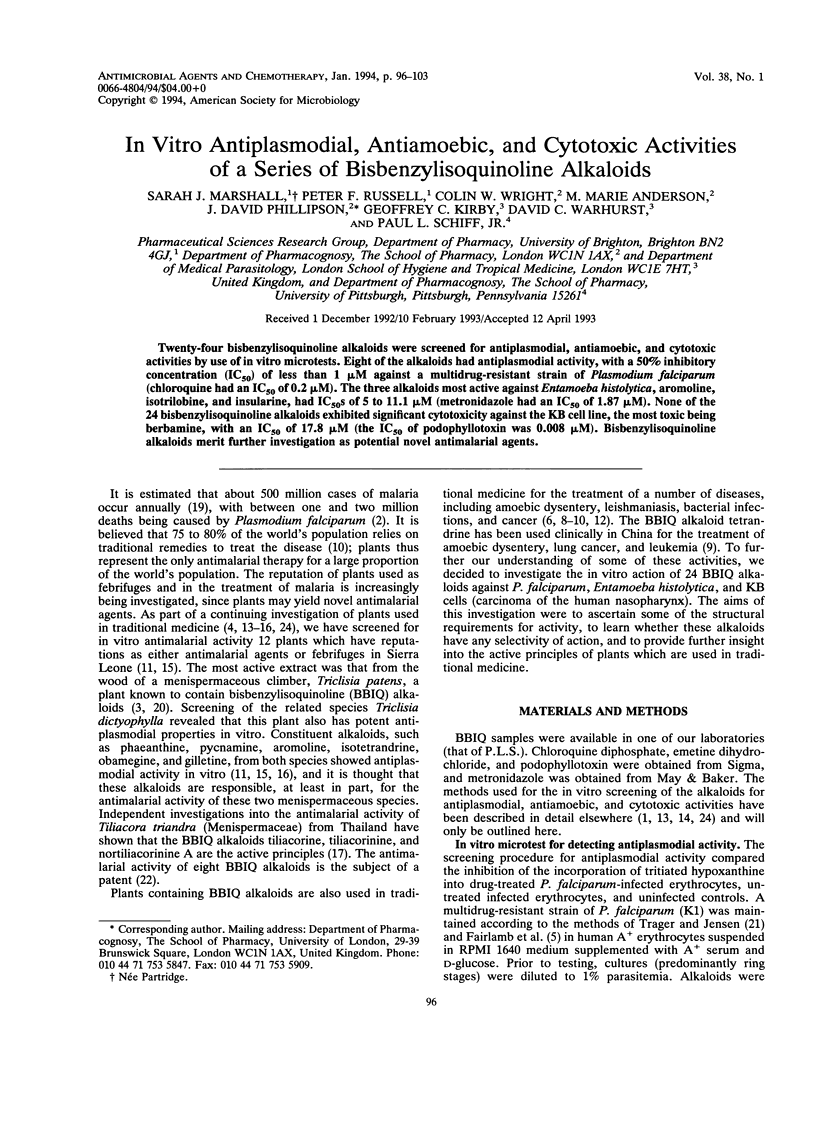
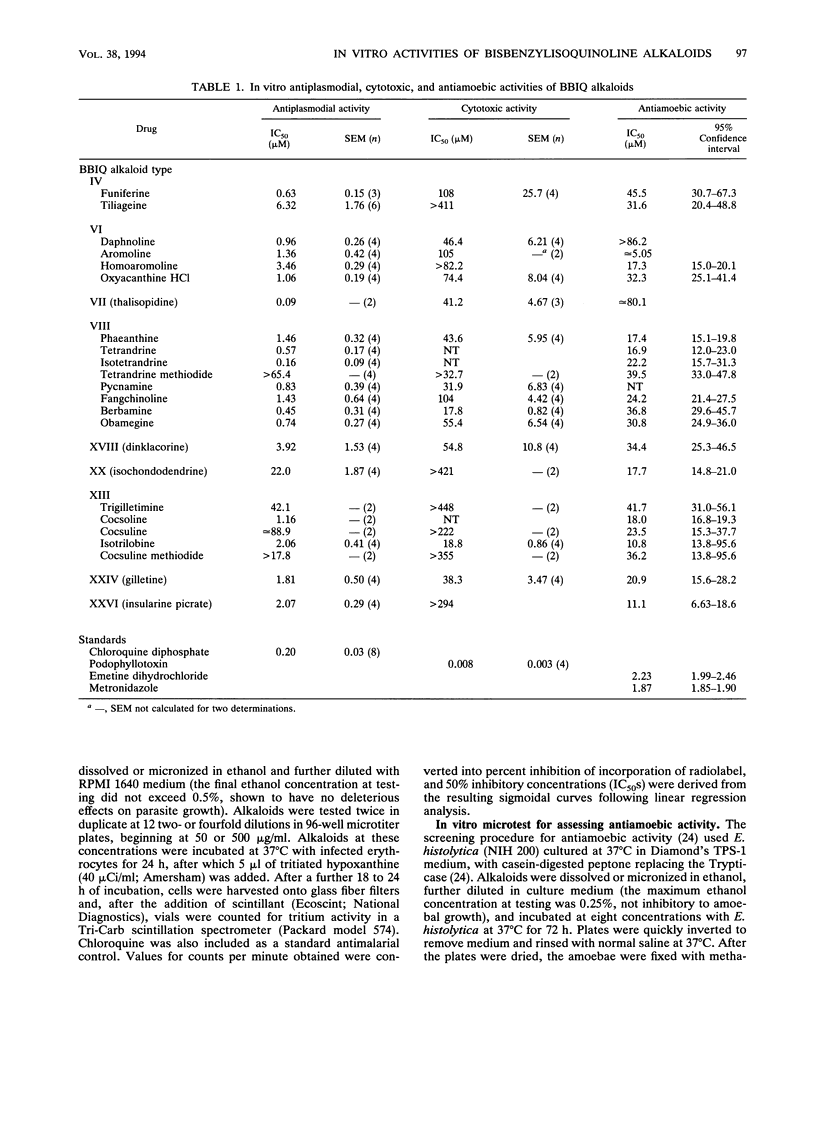
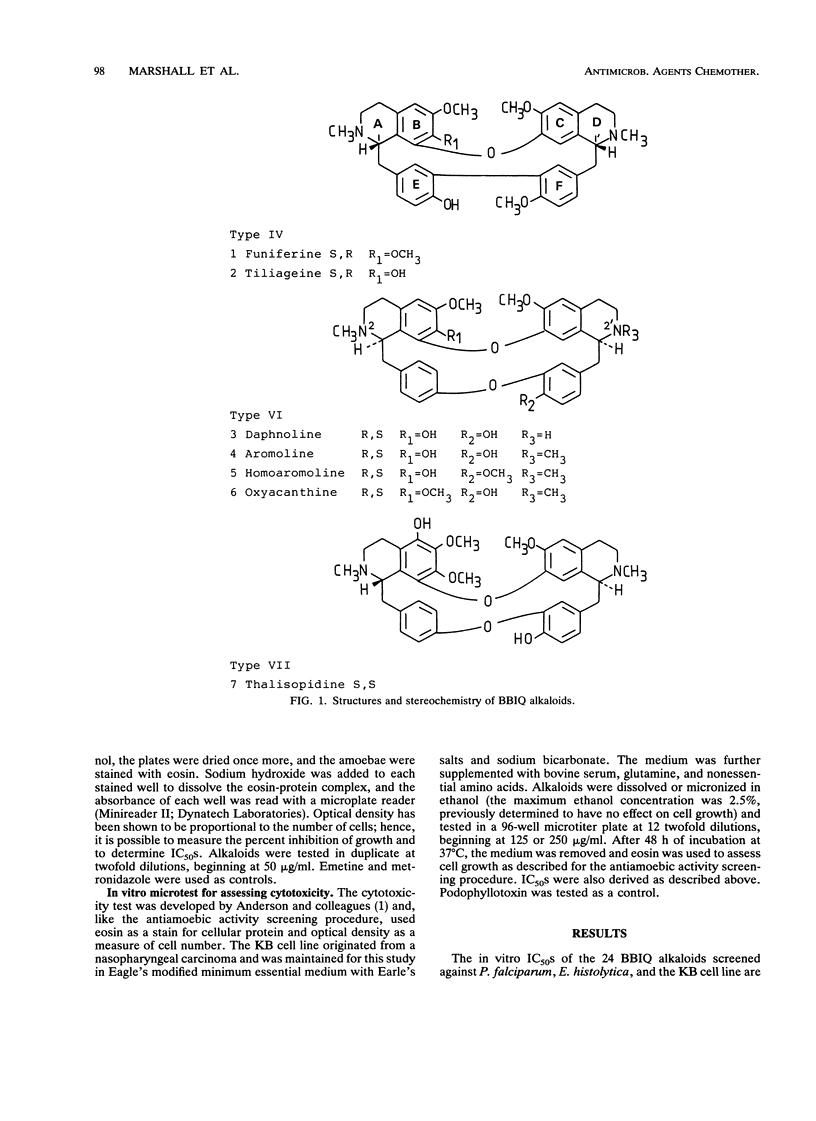
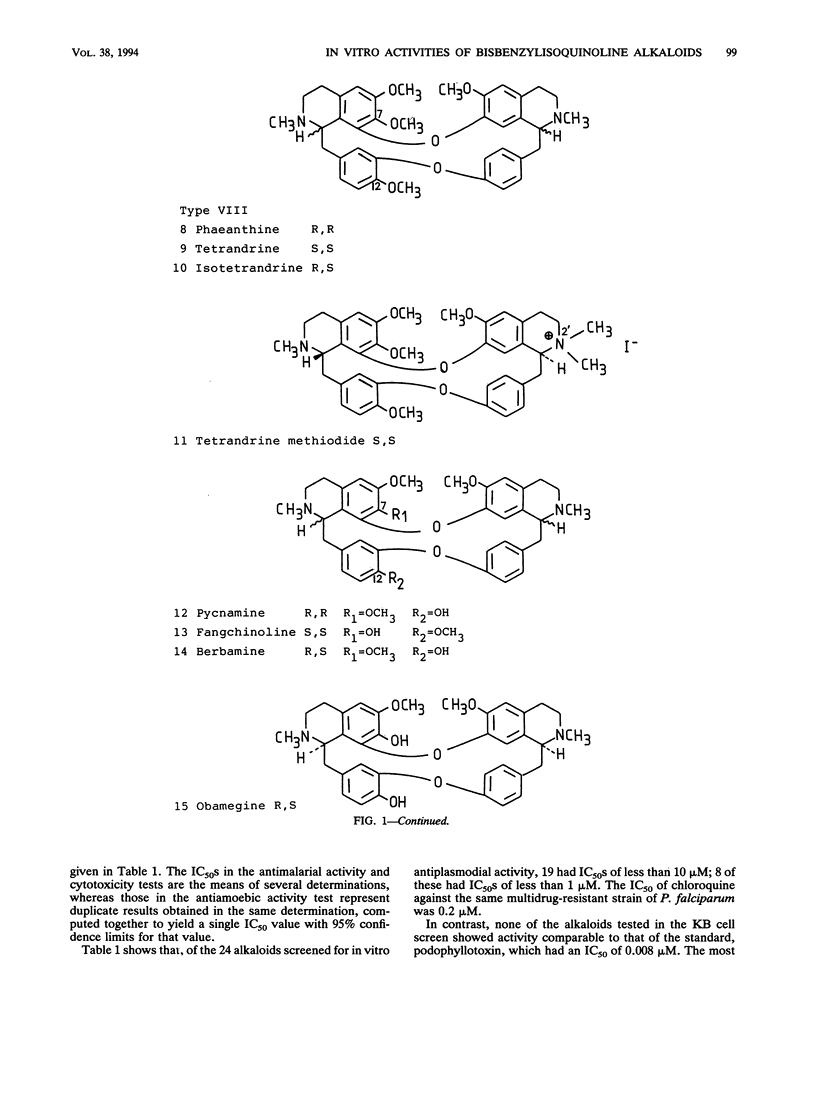
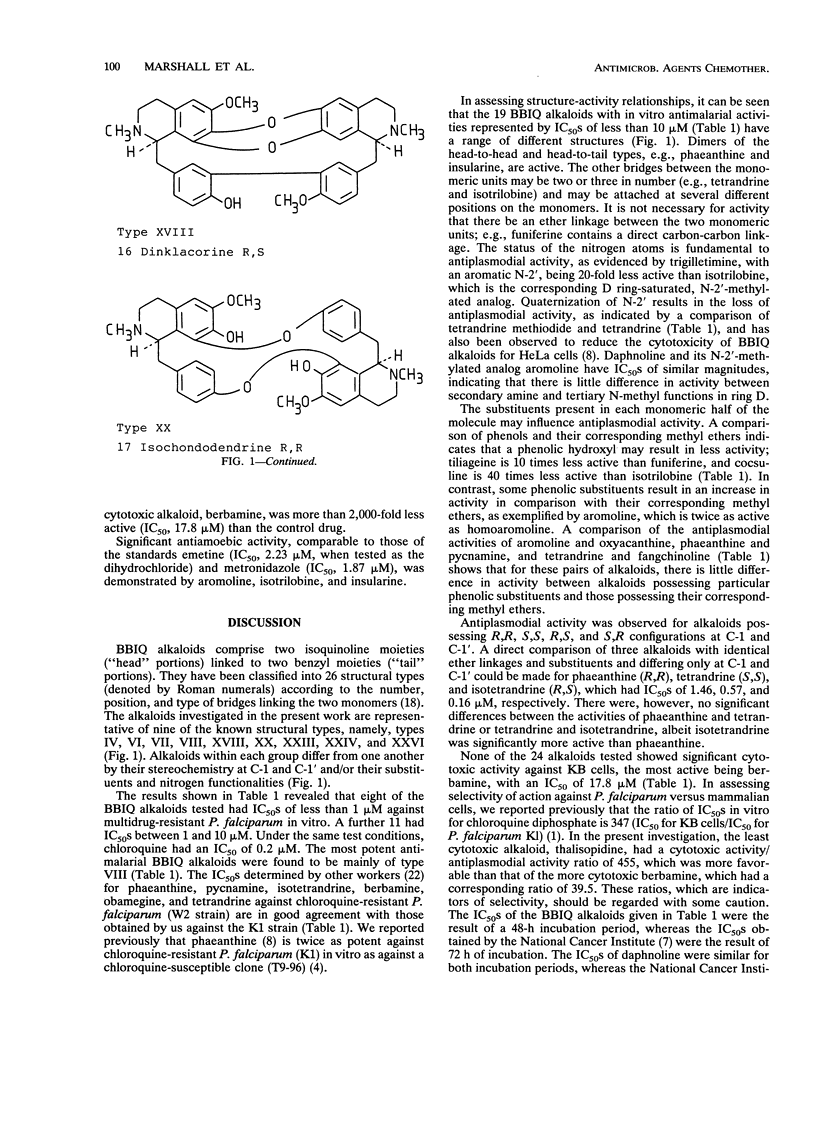
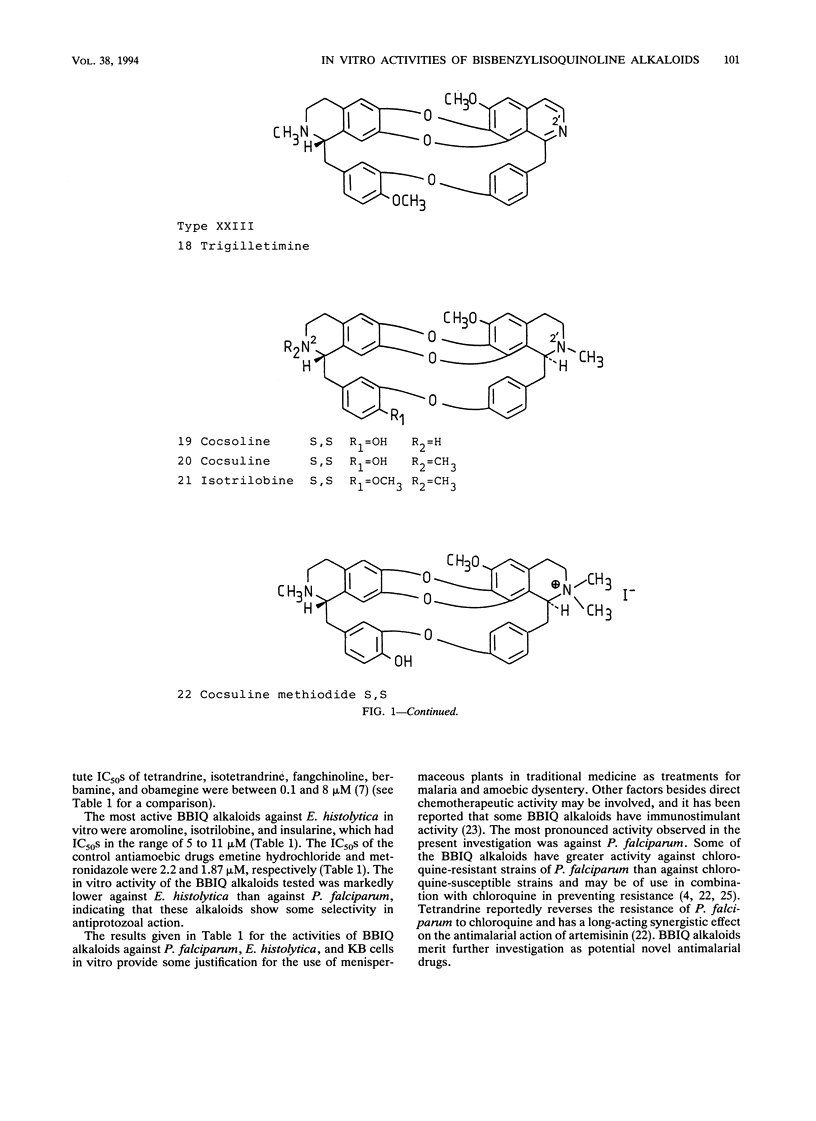
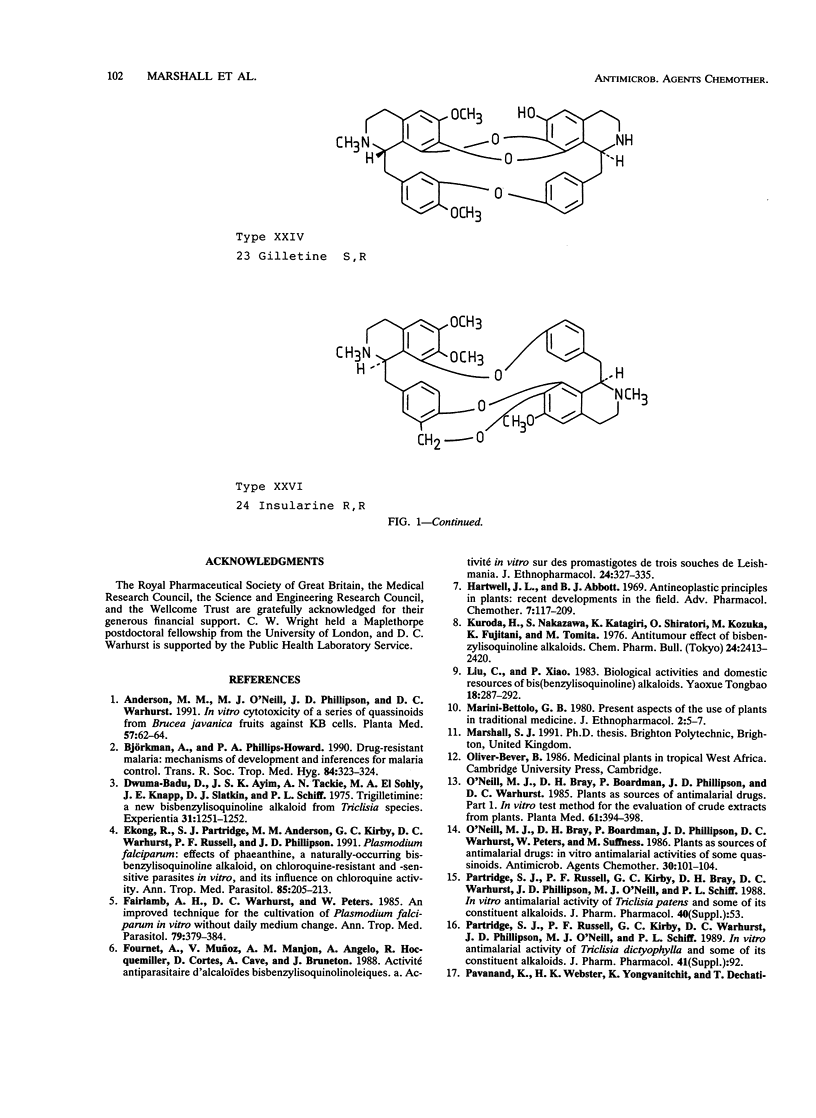
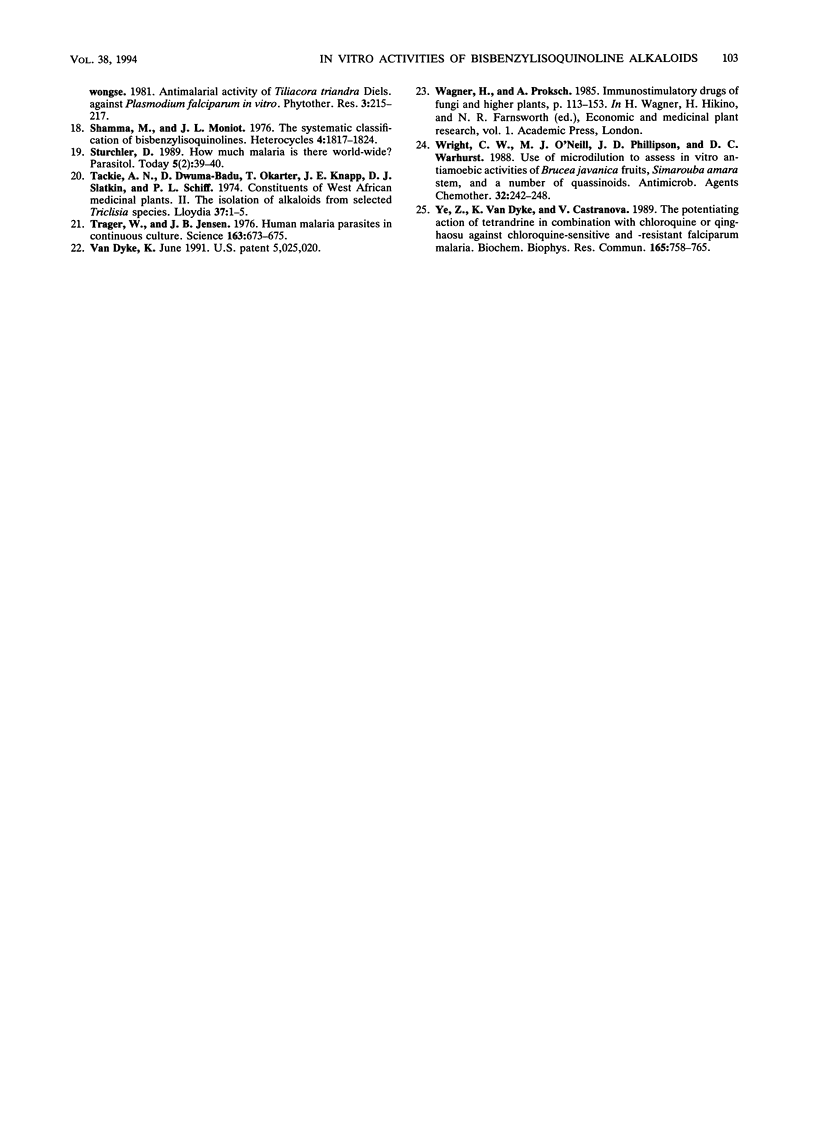
Selected References
These references are in PubMed. This may not be the complete list of references from this article.
- Anderson M. M., O'Neill M. J., Phillipson J. D., Warhurst D. C. In vitro cytotoxicity of a series of quassinoids from Brucea javanica fruits against KB cells. Planta Med. 1991 Feb;57(1):62–64. doi: 10.1055/s-2006-960020. [DOI] [PubMed] [Google Scholar]
- Björkman A., Phillips-Howard P. A. Drug-resistant malaria: mechanisms of development and inferences for malaria control. Trans R Soc Trop Med Hyg. 1990 May-Jun;84(3):323–324. doi: 10.1016/0035-9203(90)90302-u. [DOI] [PubMed] [Google Scholar]
- Ekong R., Partridge S. J., Anderson M. M., Kirby G. C., Warhurst D. C., Russell P. F., Phillipson J. D. Plasmodium falciparum: effects of phaeanthine, a naturally-occurring bisbenzylisoquinoline alkaloid, on chloroquine-resistant and -sensitive parasites in vitro, and its influence on chloroquine activity. Ann Trop Med Parasitol. 1991 Apr;85(2):205–213. doi: 10.1080/00034983.1991.11812547. [DOI] [PubMed] [Google Scholar]
- Fairlamb A. H., Warhurst D. C., Peters W. An improved technique for the cultivation of Plasmodium falciparum in vitro without daily medium change. Ann Trop Med Parasitol. 1985 Aug;79(4):379–384. doi: 10.1080/00034983.1985.11811935. [DOI] [PubMed] [Google Scholar]
- Fournet A., Muñoz V., Manjon A. M., Angelo A., Hocquemiller R., Cortes D., Cave A., Bruneton J. Activité antiparasitaire d'alcaloïdes bisbenzylisoquinoleiques. I: Activité in vitro sur des promastigotes de trois souches de Leishmania. J Ethnopharmacol. 1988 Dec;24(2-3):327–335. doi: 10.1016/0378-8741(88)90162-6. [DOI] [PubMed] [Google Scholar]
- Gürsoy A., Akbuğa J., Eroğlu L., Ulutín S. The inhibitory effect of liposome-encapsulated indomethacin on inflammation and platelet aggregation. J Pharm Pharmacol. 1988 Jan;40(1):53–54. doi: 10.1111/j.2042-7158.1988.tb05150.x. [DOI] [PubMed] [Google Scholar]
- Hartwell J. L., Abbott B. J. Antineoplastic principles in plants: recent developments in the field. Adv Pharmacol Chemother. 1969;7:117–209. [PubMed] [Google Scholar]
- Kuroda H., Nakazawa S., Katagiri K., Shiratori O., Kozuka M. Antitumor effect of bisbenzylisoquinoline alkaloids. Chem Pharm Bull (Tokyo) 1976 Oct;24(10):2413–2420. doi: 10.1248/cpb.24.2413. [DOI] [PubMed] [Google Scholar]
- Marini-Bettòlo G. B. Present aspects of the use of plants in traditional medicine. J Ethnopharmacol. 1980 Mar;2(1):5–7. doi: 10.1016/0378-8741(80)90021-5. [DOI] [PubMed] [Google Scholar]
- O'Neill M. J., Bray D. H., Boardman P., Phillipson J. D., Warhurst D. C., Peters W., Suffness M. Plants as sources of antimalarial drugs: in vitro antimalarial activities of some quassinoids. Antimicrob Agents Chemother. 1986 Jul;30(1):101–104. doi: 10.1128/aac.30.1.101. [DOI] [PMC free article] [PubMed] [Google Scholar]
- Tackie A. N., Dwuma-Badu D., Okarter T., Knapp J. E., Slatkin D. J., Schiff P. L., Jr Constituents of West African medicinal plants. II. The isolation of alkaloids from selected Triclisia species. Lloydia. 1974 Mar;37(1):1–5. [PubMed] [Google Scholar]
- Trager W., Jensen J. B. Human malaria parasites in continuous culture. Science. 1976 Aug 20;193(4254):673–675. doi: 10.1126/science.781840. [DOI] [PubMed] [Google Scholar]
- Valenzuela R., Li C. H., Huidobro-Toro J. P. Lack of mixed agonist-antagonist properties of [Gln8-Gly31]-beta h-EP-Gly-Gly-NH2 and [Arg9,19,24,28,29]-beta h-EP in the rat vas deferens neuroeffector junction: studies with naloxone, beta-funaltrexamine and ICI 174,864. J Pharm Pharmacol. 1989 Feb;41(2):92–96. doi: 10.1111/j.2042-7158.1989.tb06400.x. [DOI] [PubMed] [Google Scholar]
- Ye Z. G., Van Dyke K., Castranova V. The potentiating action of tetrandrine in combination with chloroquine or qinghaosu against chloroquine-sensitive and resistant falciparum malaria. Biochem Biophys Res Commun. 1989 Dec 15;165(2):758–765. doi: 10.1016/s0006-291x(89)80031-2. [DOI] [PubMed] [Google Scholar]


